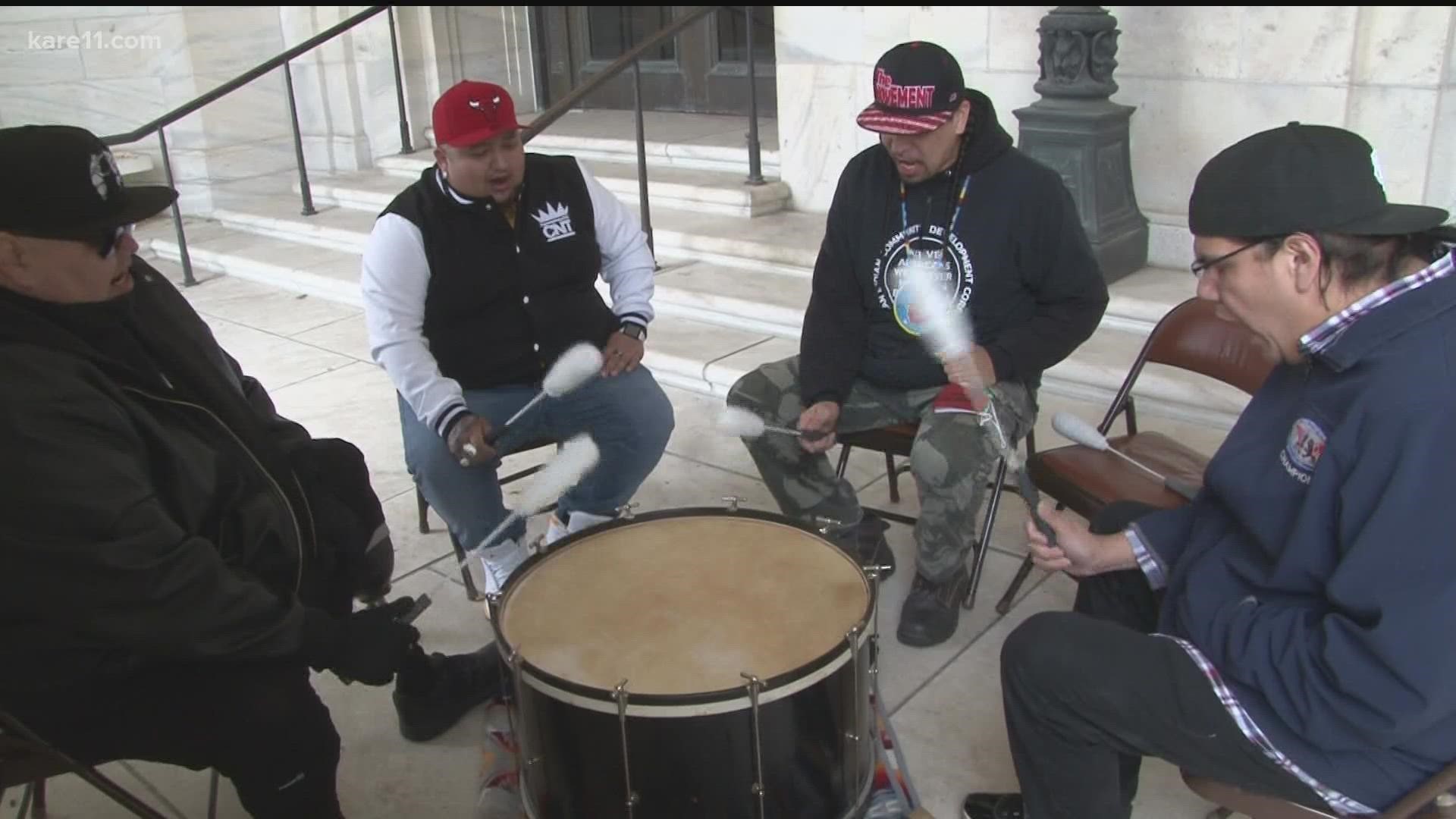ST PAUL, Minn. — Sixteen Native American nonprofits have joined forces to ask for state aid for a dozen different construction projects that will help them serve Indigenous families in the Twin Cities Metro.
The groups staged a rally Friday at the State Capitol to draw more support for bills that are pending in the Minnesota House and Senate at a time when the state has a projected $9 billion budget surplus.
"Our people deserve state-of-the-art facilities, in their education facilities and their health care, in their behavioral health, in their treatment facilities, in their housing," Joe Hobot of the American Indian IOC told the crowd in the Capitol Rotunda.
"We know 160 years ago this August our people were told 'Let them eat grass' when they asked for resources. It was not appropriate then. It is not appropriate now."
The Clyde Bellecourt Urban Indigenous Legacy Initiative combines 12 projects into one $83 million request of lawmakers. That would be matched by $60 in private donations the coalition has already raised for those projects.
The effort is named for the late Clyde Bellecourt, a White Earth Anishinaabe Minnesota activist who co-founded the American Indian Movement and helped launch several nonprofit services.
A drumming group led by his son, Crow Bellecourt, performed for the rally. They had to set up just outside the main entrance to the Capitol because of a rule barring live music in the Rotunda between March 18 and the end of session.
Indigenous Minnesotans suffered disproportionately from the COVID-19 pandemic and the 2020 Minneapolis riots. Lake Street and Franklin Avenue in South Minneapolis are important cultural corridors for local Native American communities.
Even before the pandemic 25 percent of the state's homeless population identified as Native American, even though Indigenous persons account for only two percent of the state's population.
"The reality is we know how to heal our communities best, we know how to serve our communities best, and we’re asking for the resources to be able to do that," Marisa Cummings of the Minnesota Indigenous Women's Resource Center told reporters.
"This is not a time of scarcity. And our people are used to taking crumbs. And we don’t have to do that anymore. We are at a time when we can be provided the buildings and facilities to take care of our people."
One of the construction projects would create a new home for Migizi, an agency that provided educational and cultural services to Indigenous Youth. The agency opened a new building in September of 2019 only to see it destroyed eight months later by fires set by rioters in the aftermath of George Floyd's murder.
"Our grant making process is tedious. It’s competitive and it pits all these organizations against one another," Rep. Hodan Hassan, a Minneapolis Democrat who is the lead author of the House bill, explained.
"So, it is no surprise these brilliant minds came together and said 'We are going to work together to do one ask'. Each organization who is part of this ask plays a key and vital role in our community."
Rep. Hassan's bill has received a hearing in the House. The Senate companion bill is being carried by DFL Sen. Mary Kunesh of New Hope. It hasn't received a hearing yet, but she has spoken to Republican Senate Majority Leader Jeremy Miller about how important the legislation is to helping battered communities recover.
Members of the collaborative described buildings that are overdue for repairs, replacement or expansion at a time of growing needs for the unique culture-centered services these Native American nonprofits provide.
"If you’re ever in our building when it’s raining, bring an umbrella. The roof has been leaking since just about day one when it opened in 1975," Mary LaGarde, who heads the Minneapolis American Indian Center, told reporters.
"We have continued to patch the building as best we can and utilize spaces for offices for programs events and activities that it wasn’t designed for."
Hobot said his agency's current facility was originally built in the 1930s as a warehouse to store White Pages and Yellow Pages phone books.

